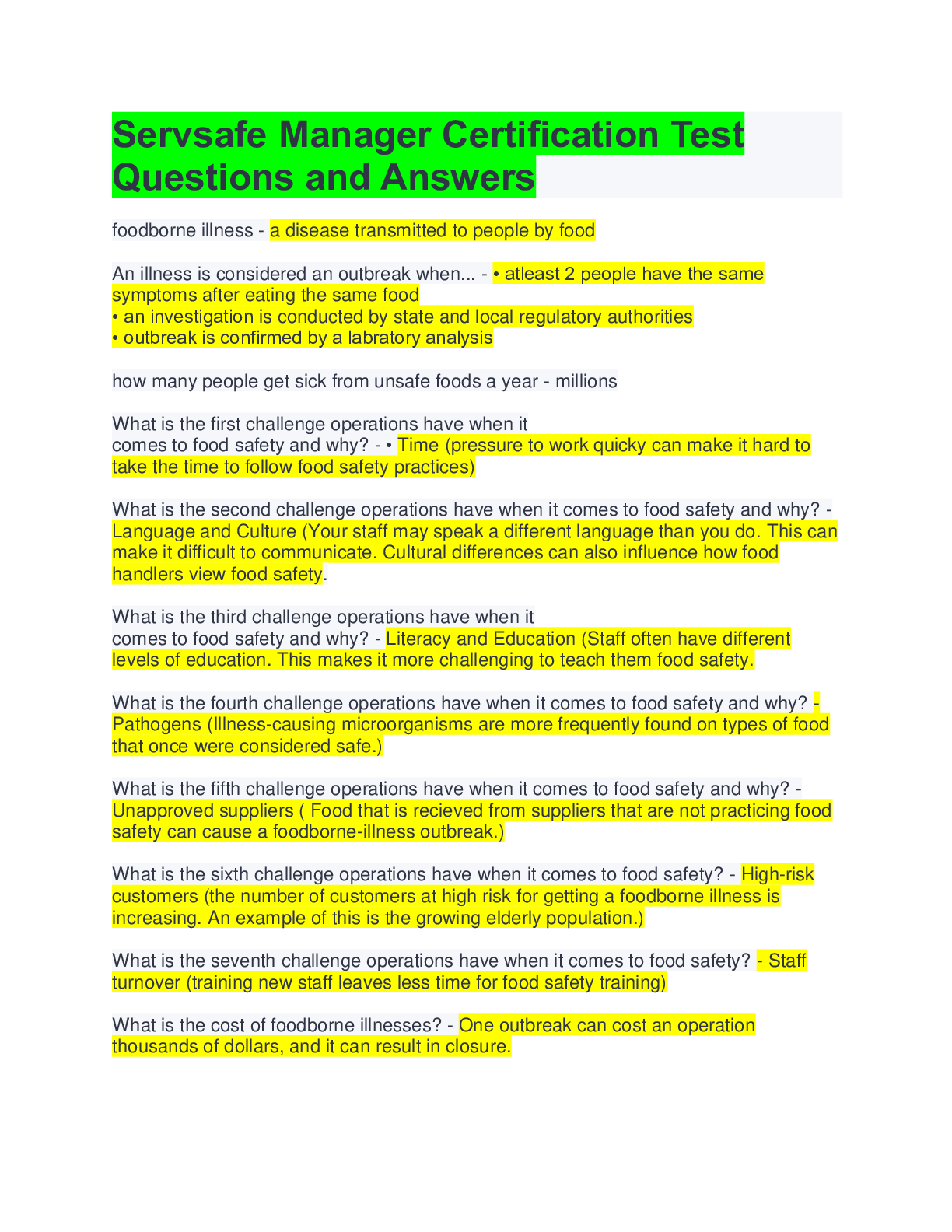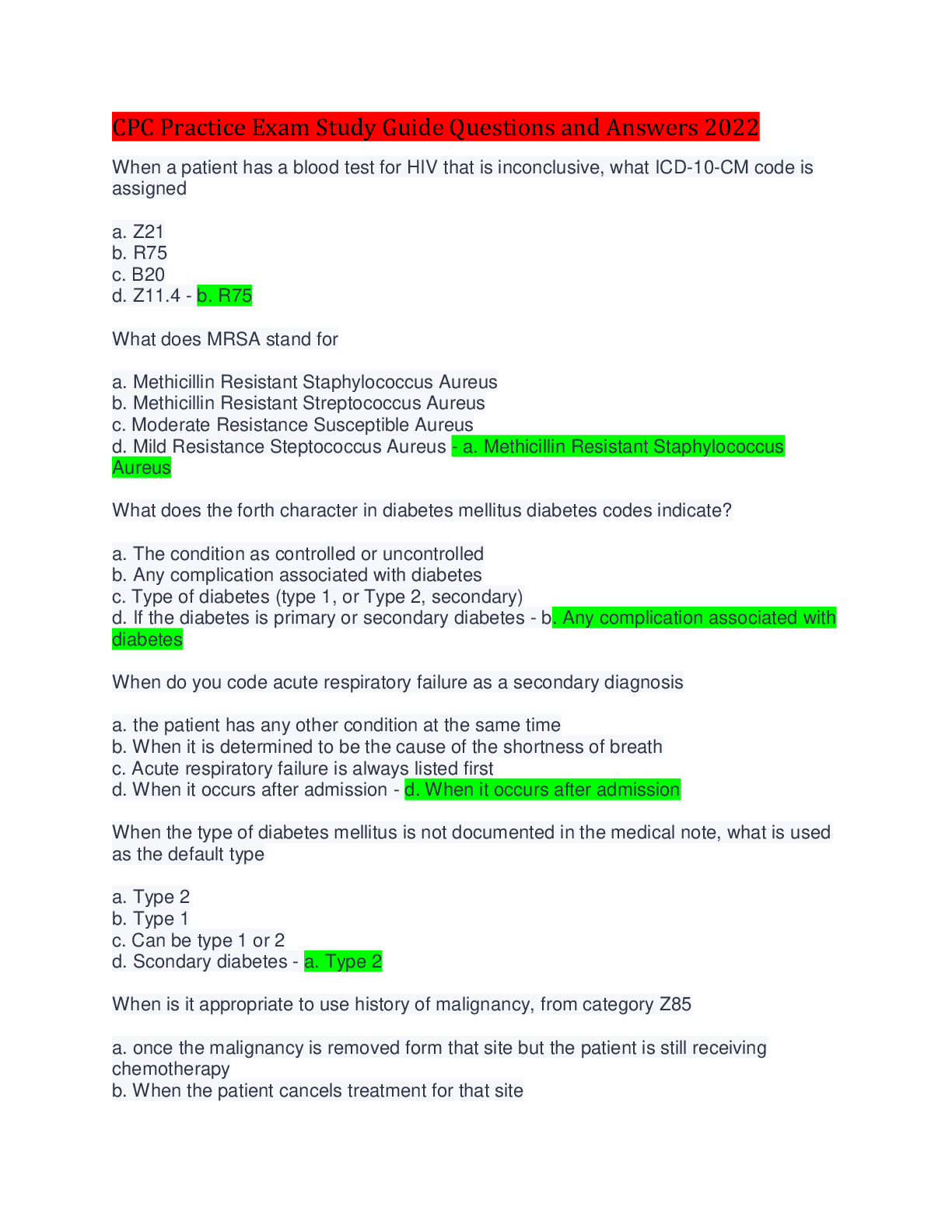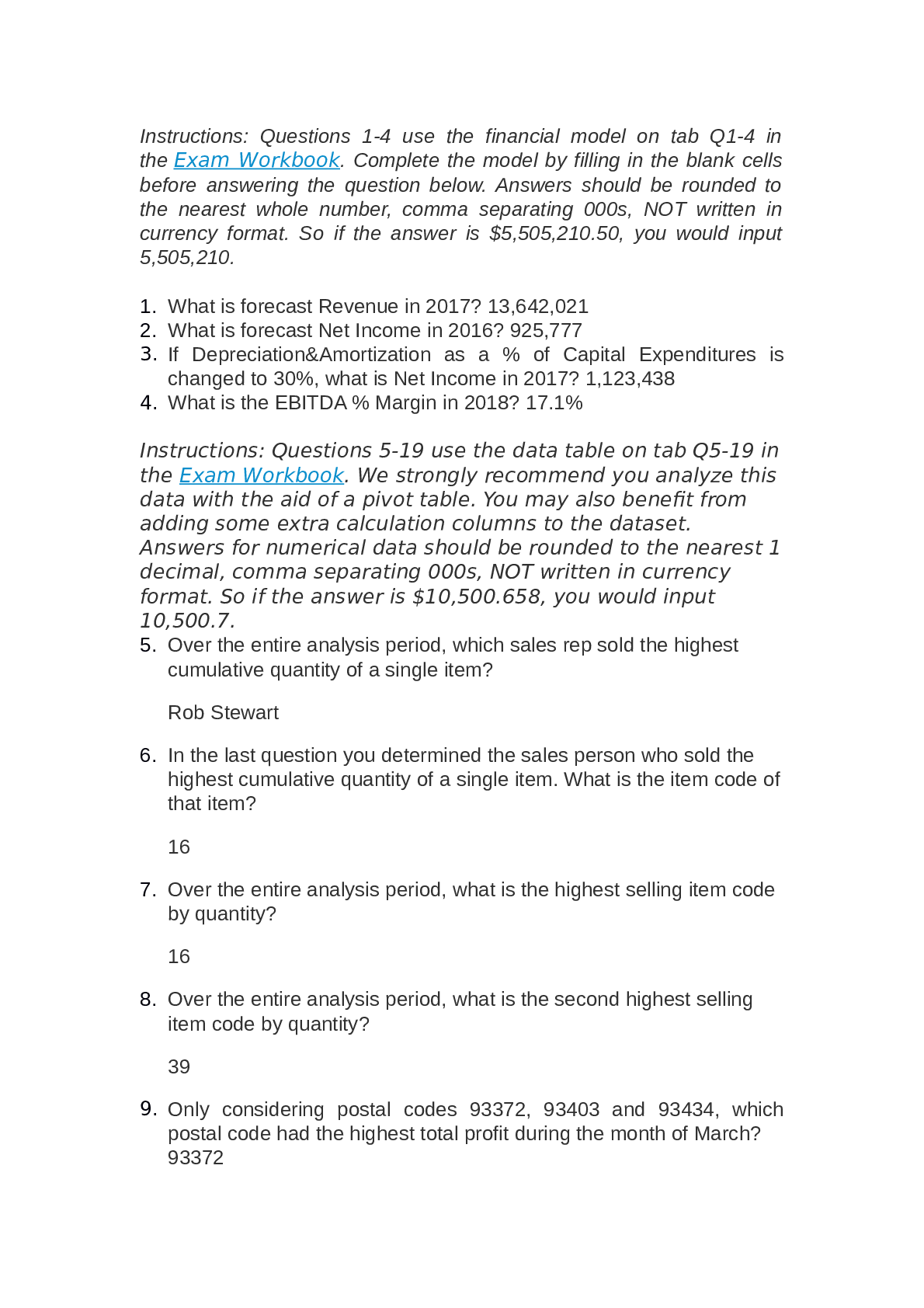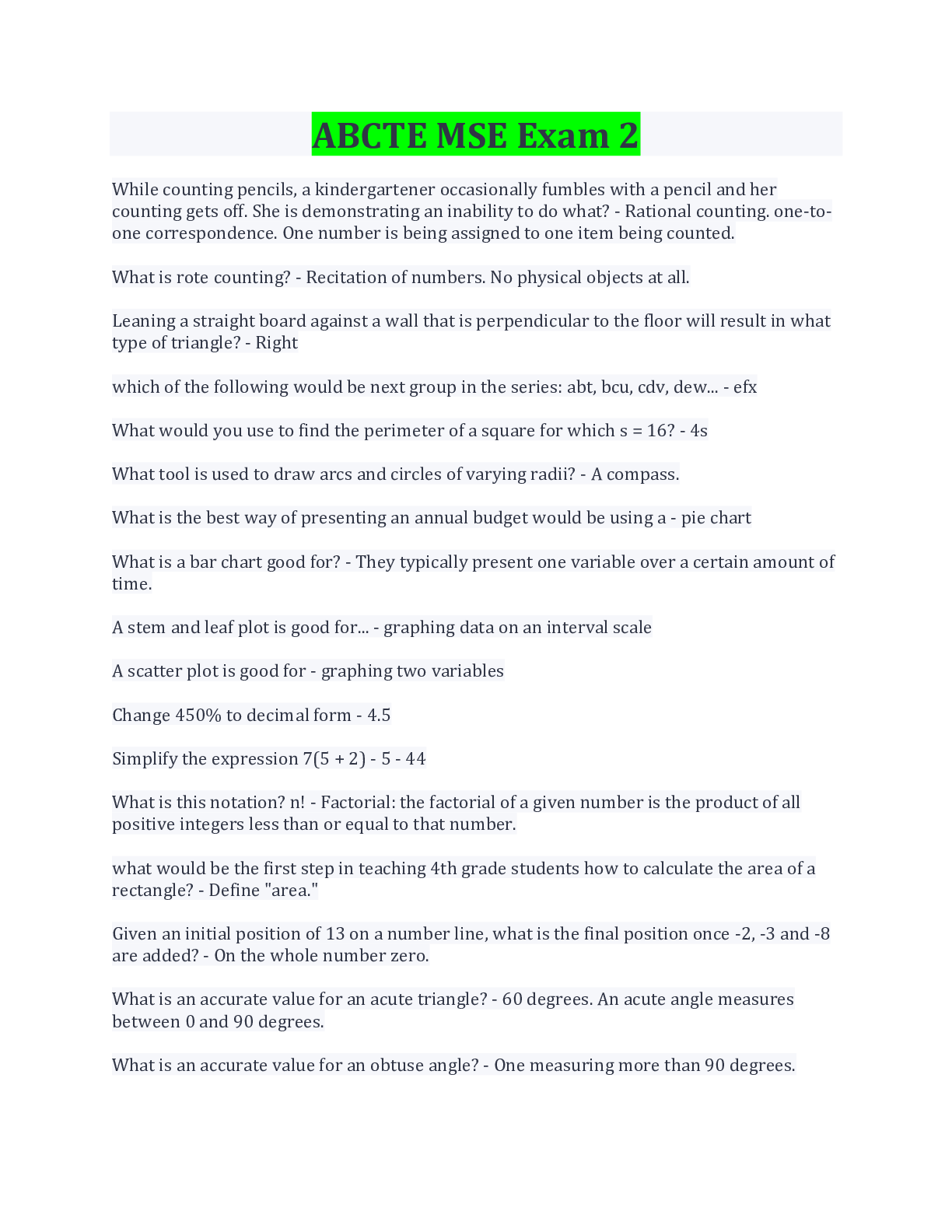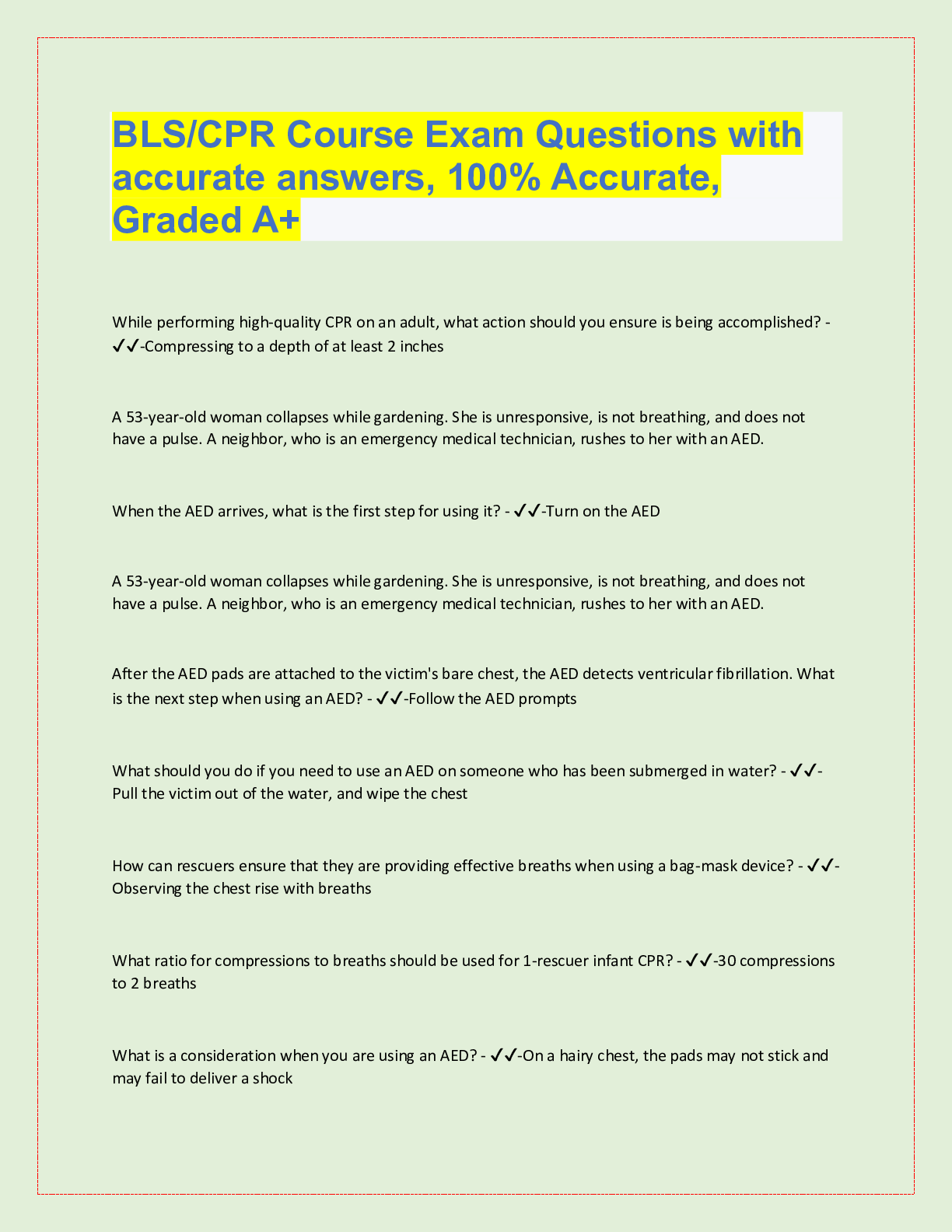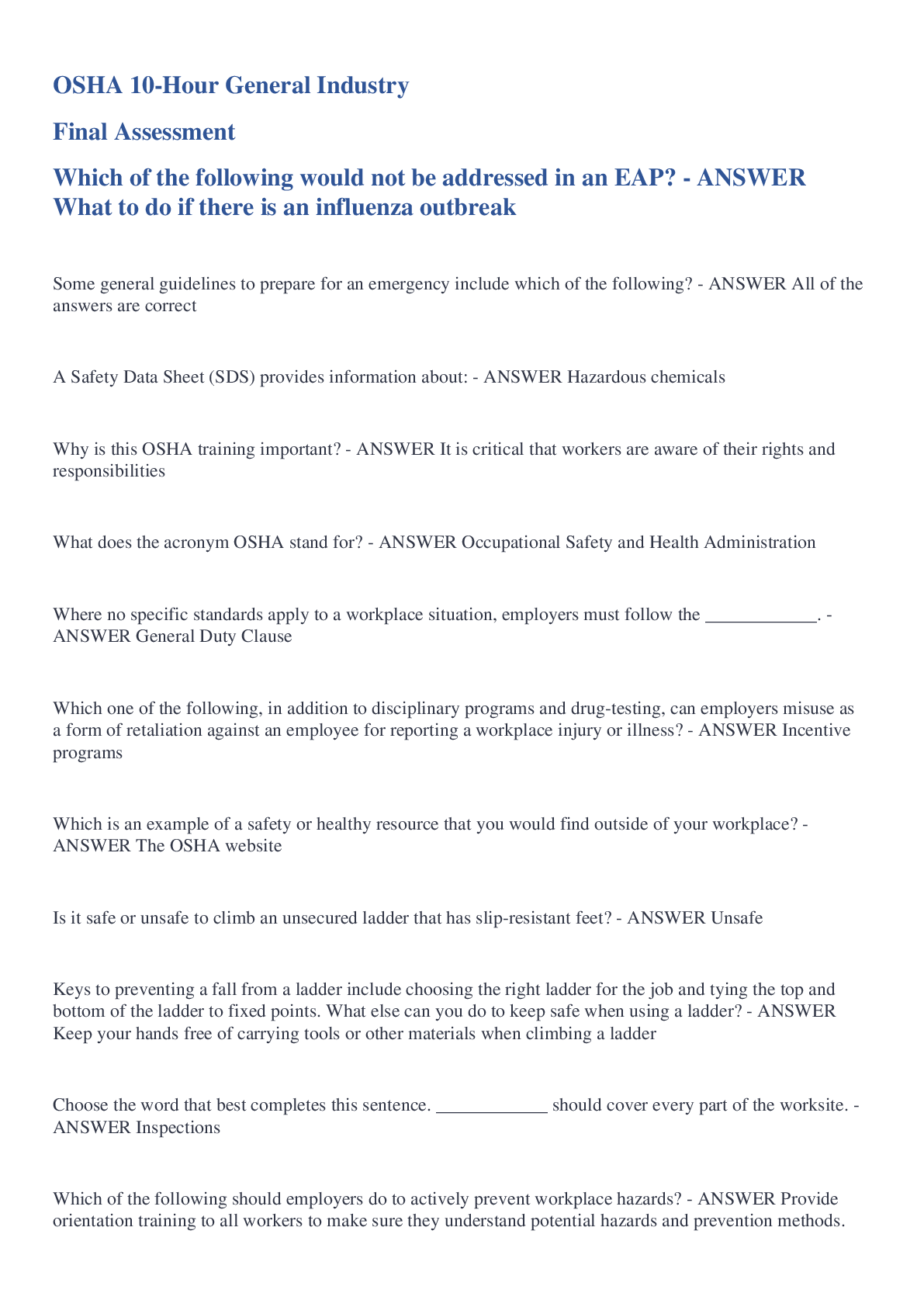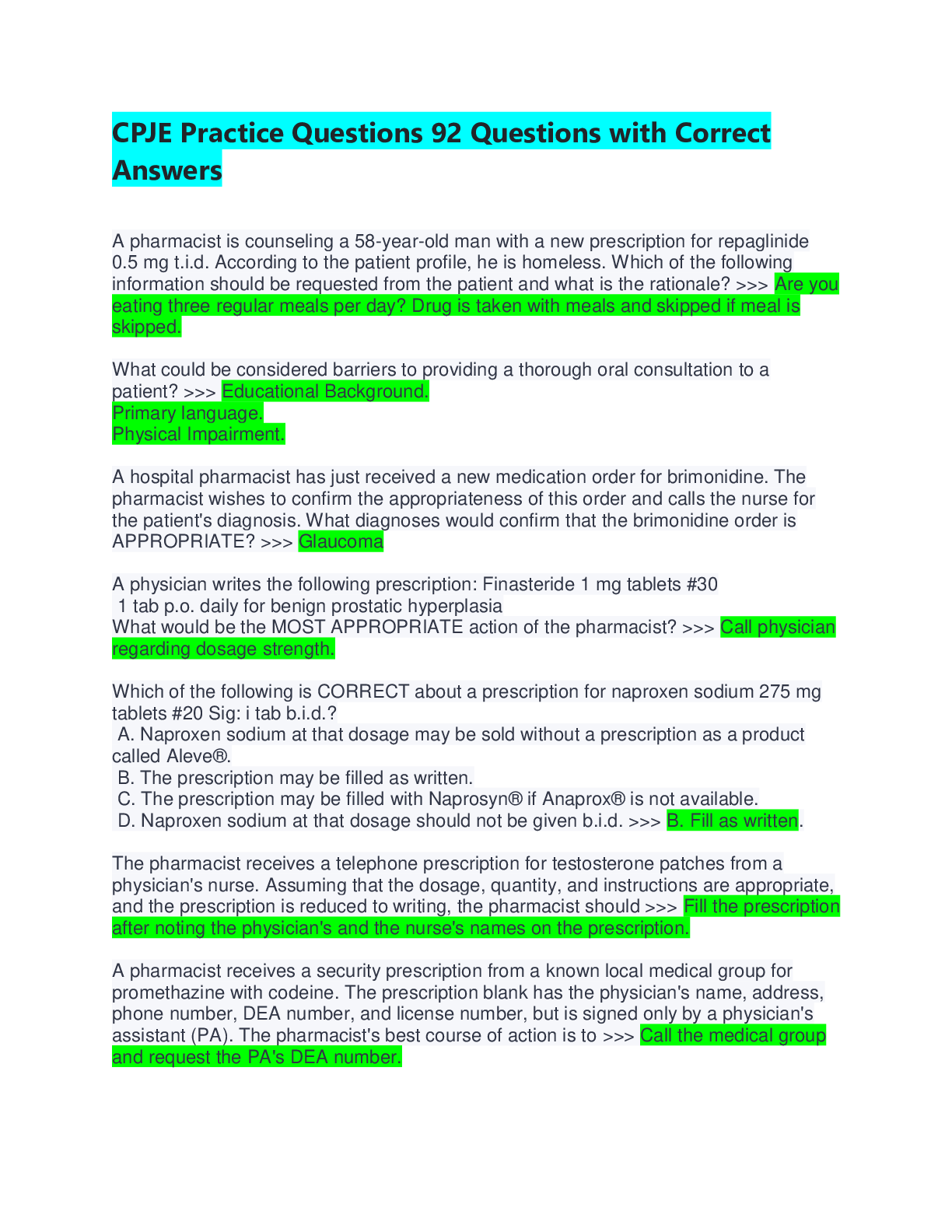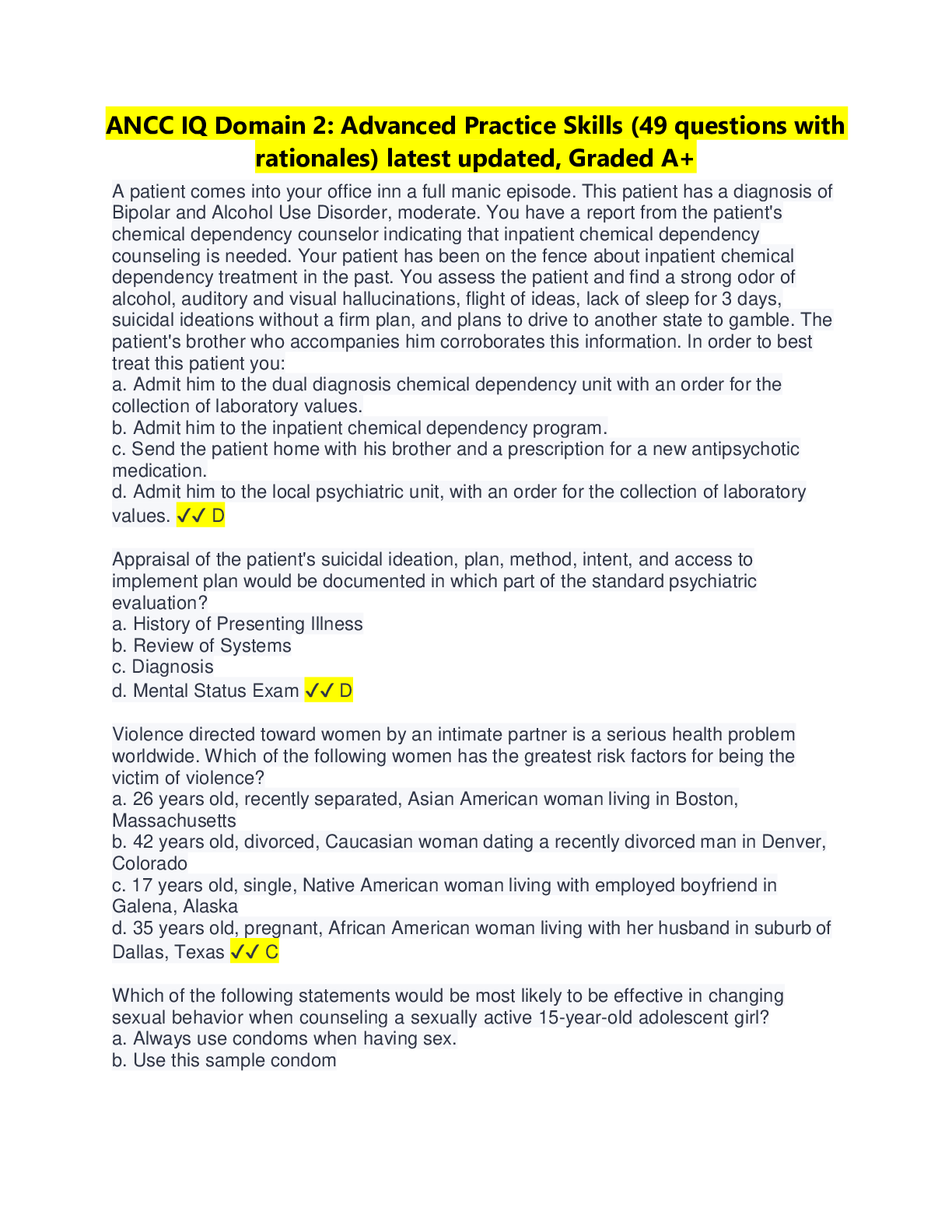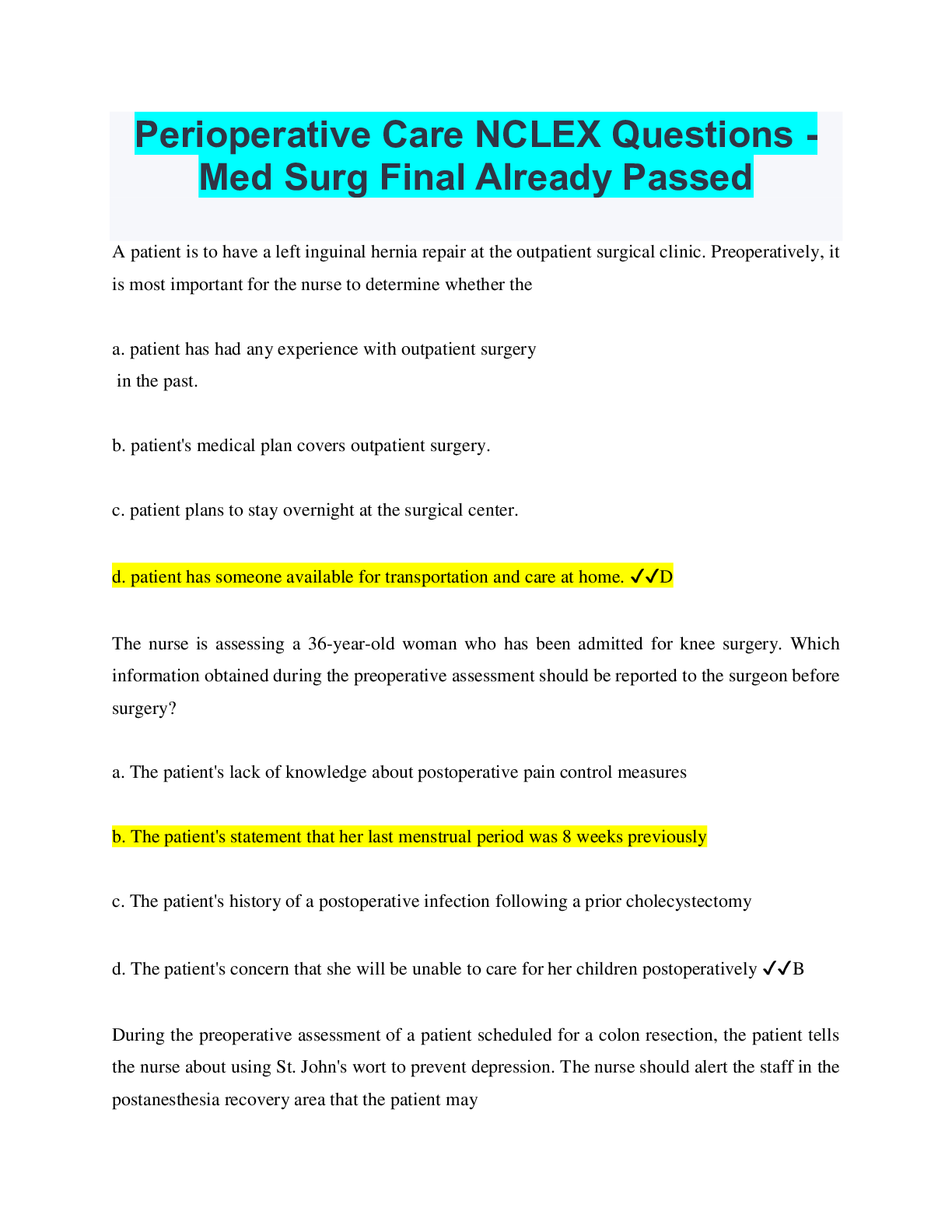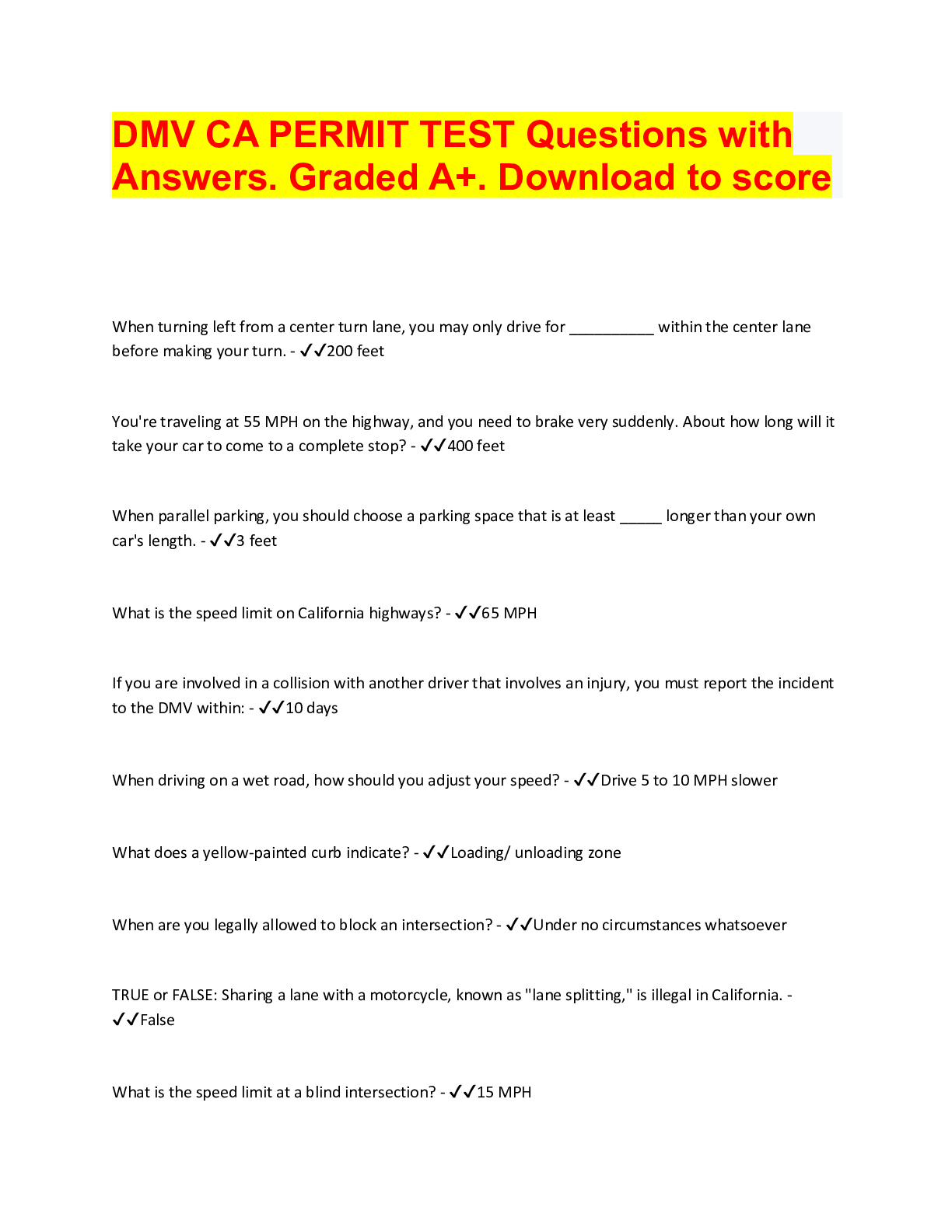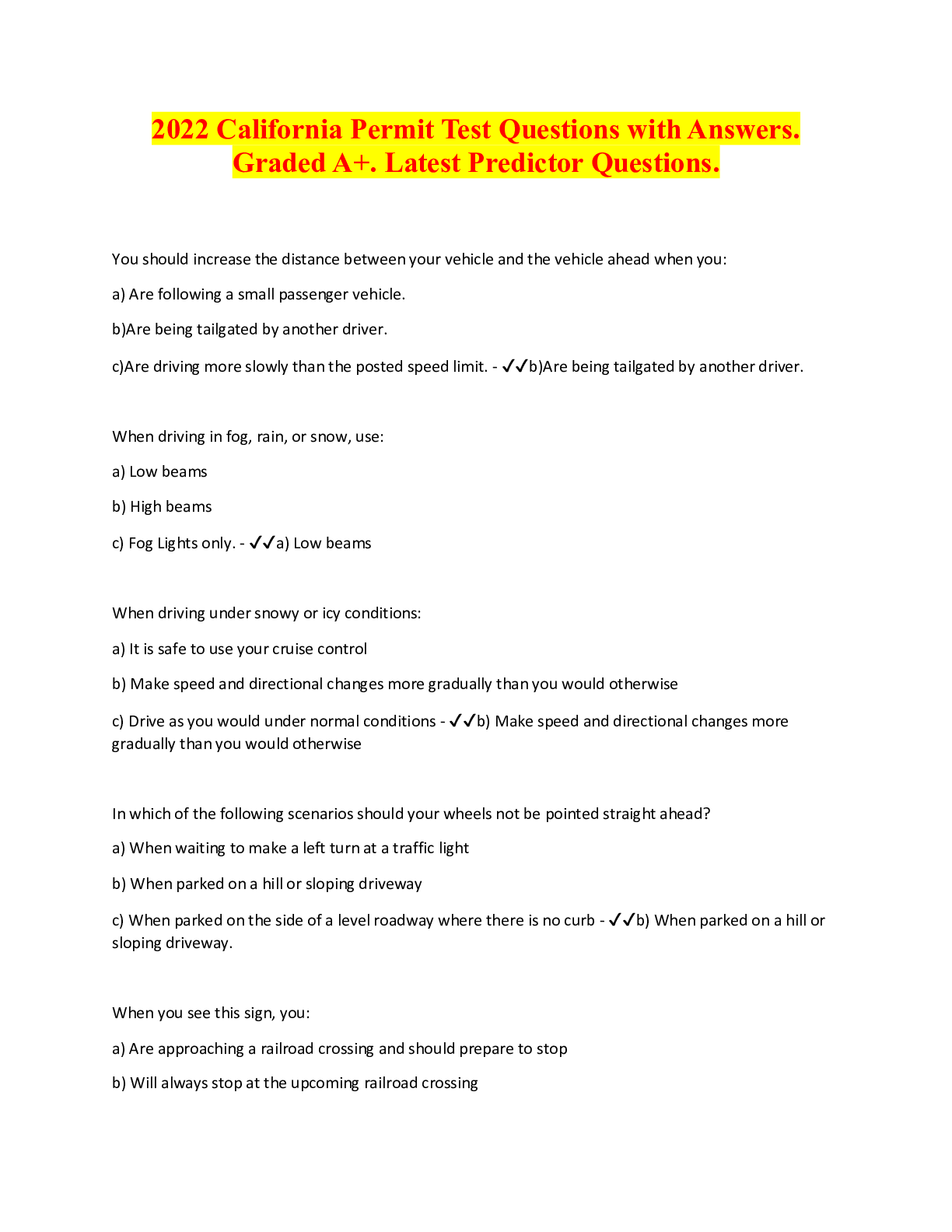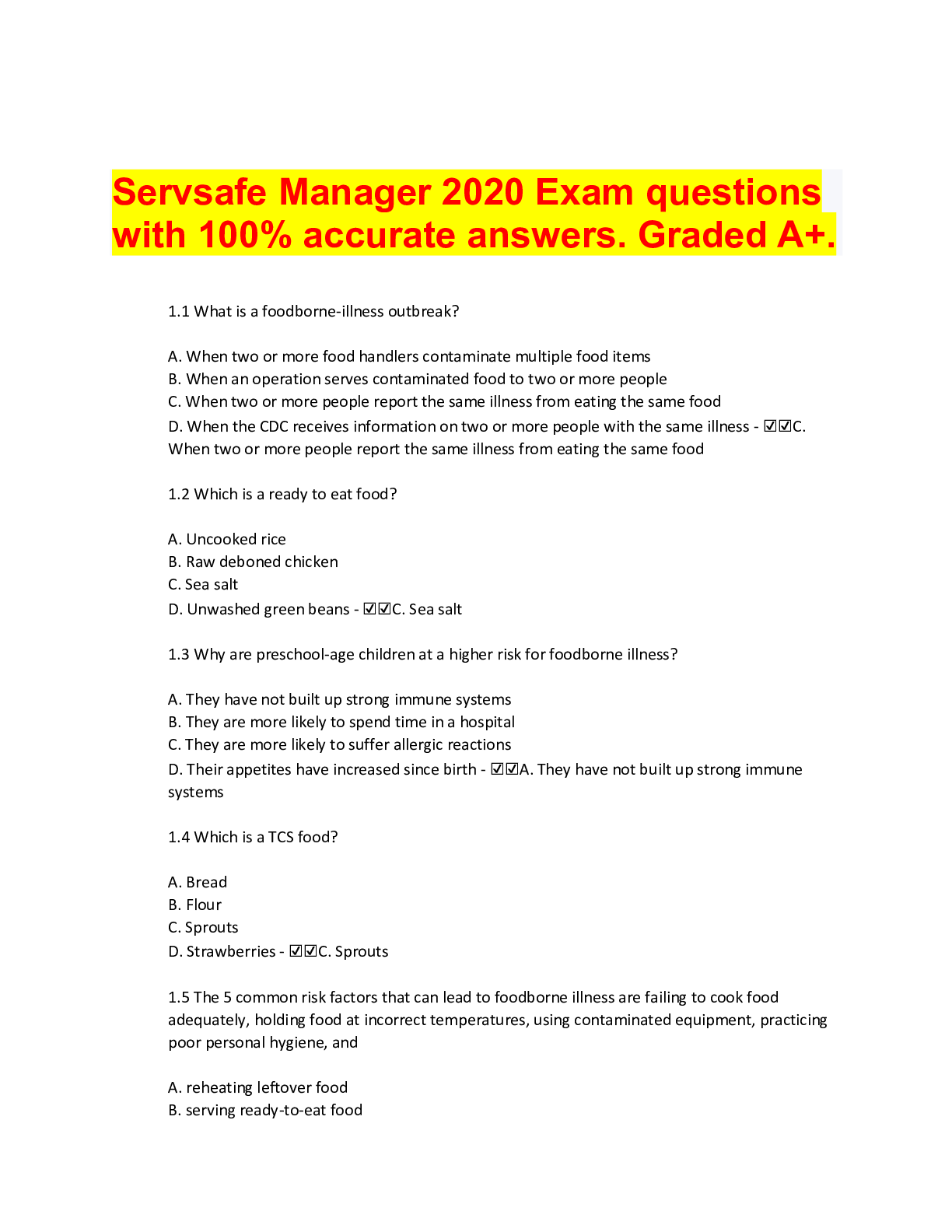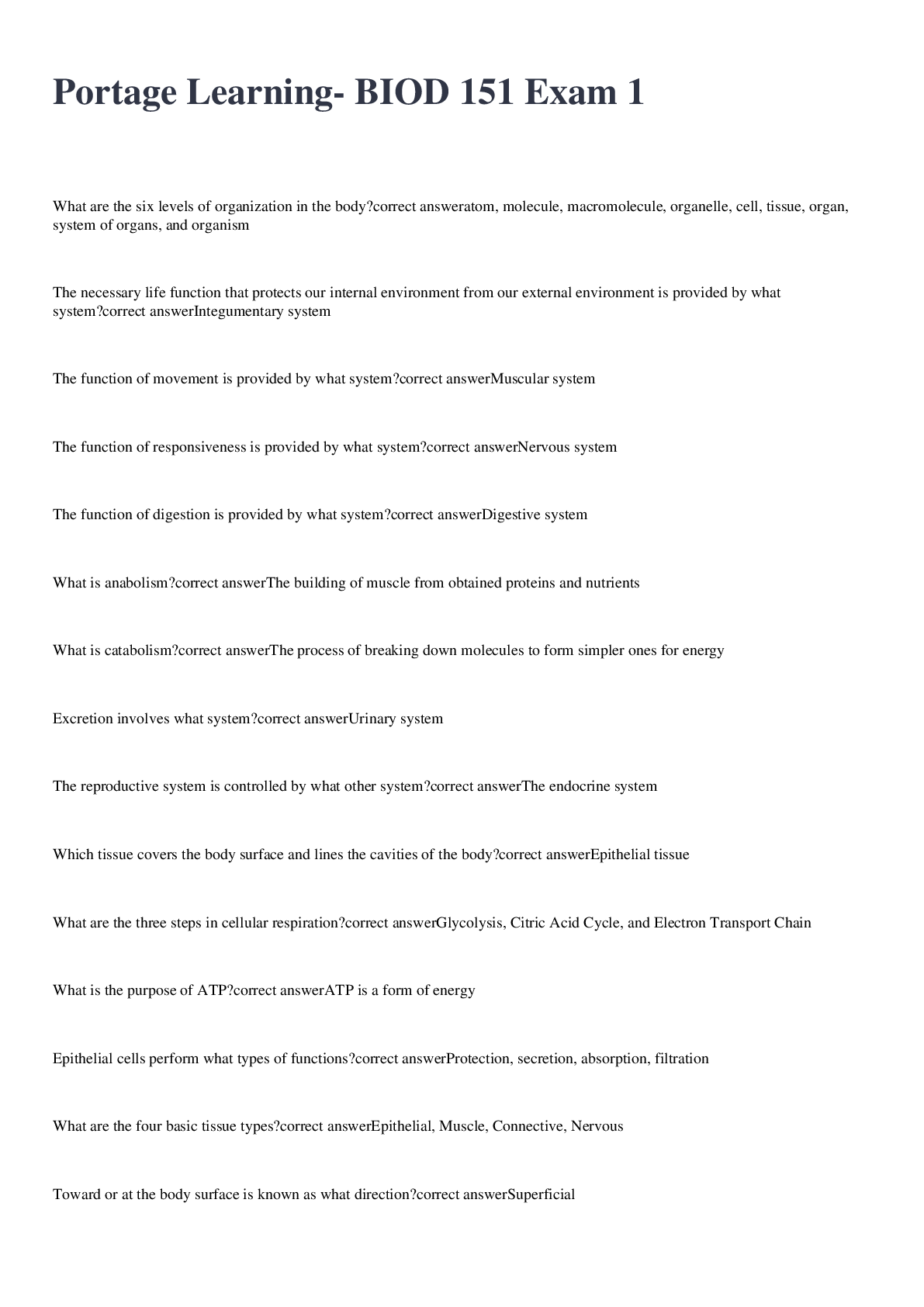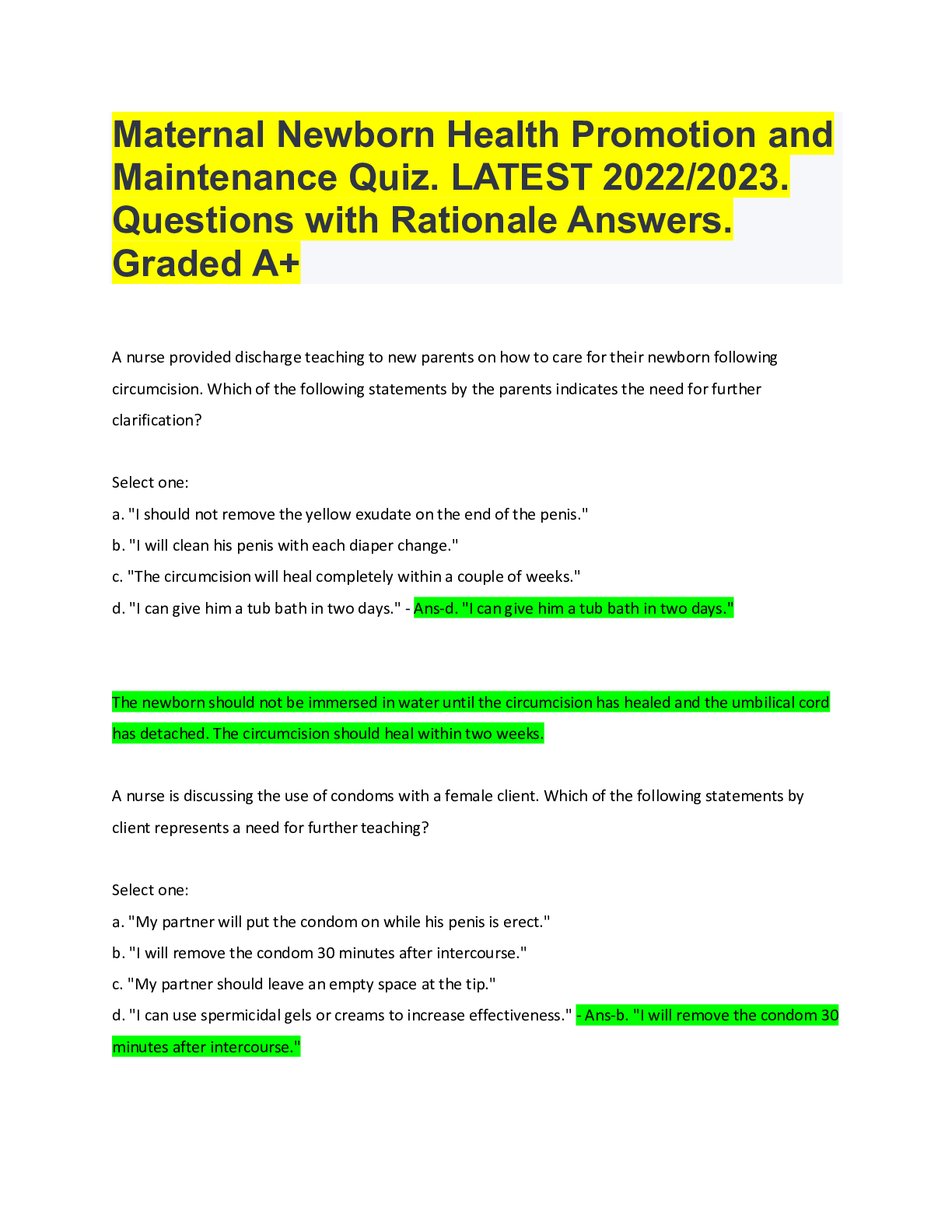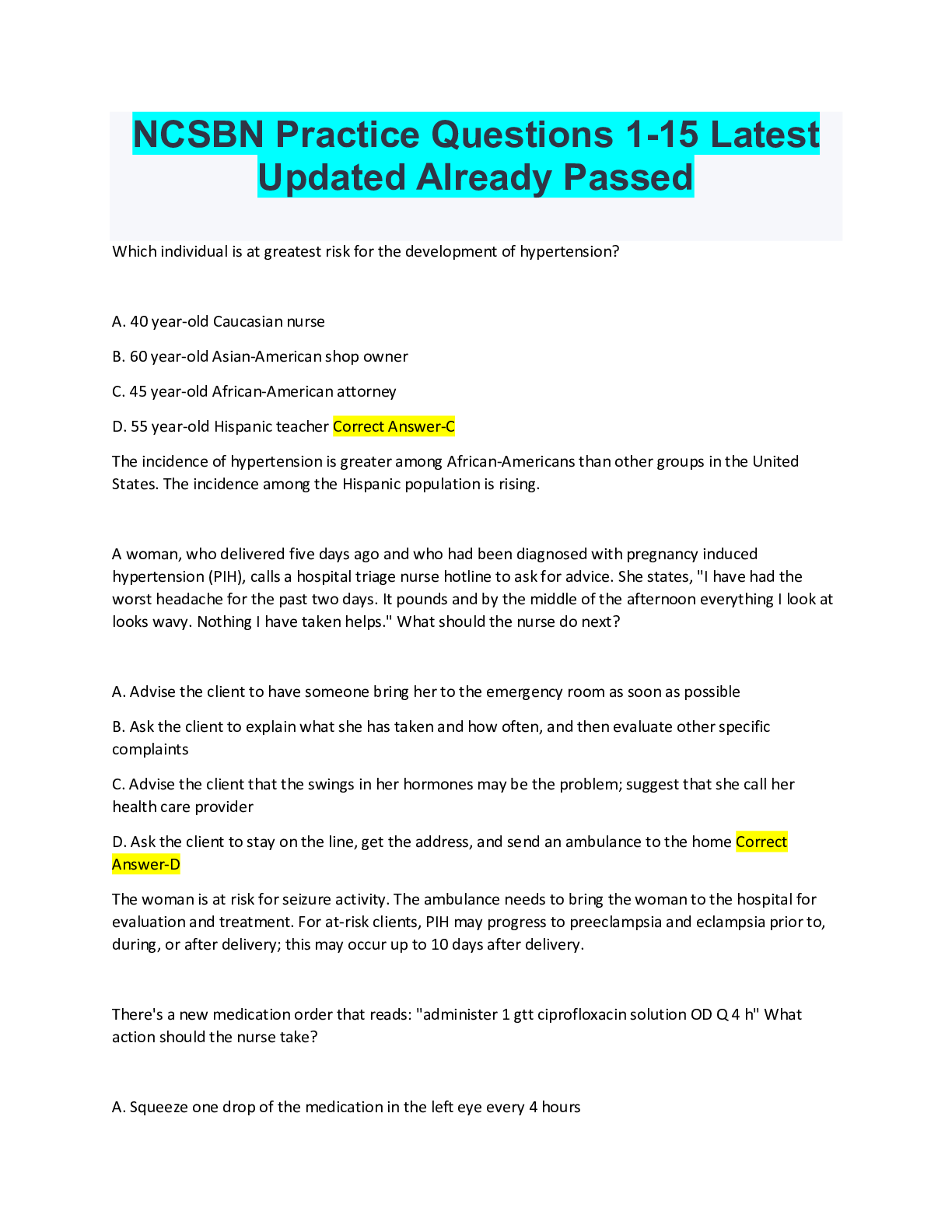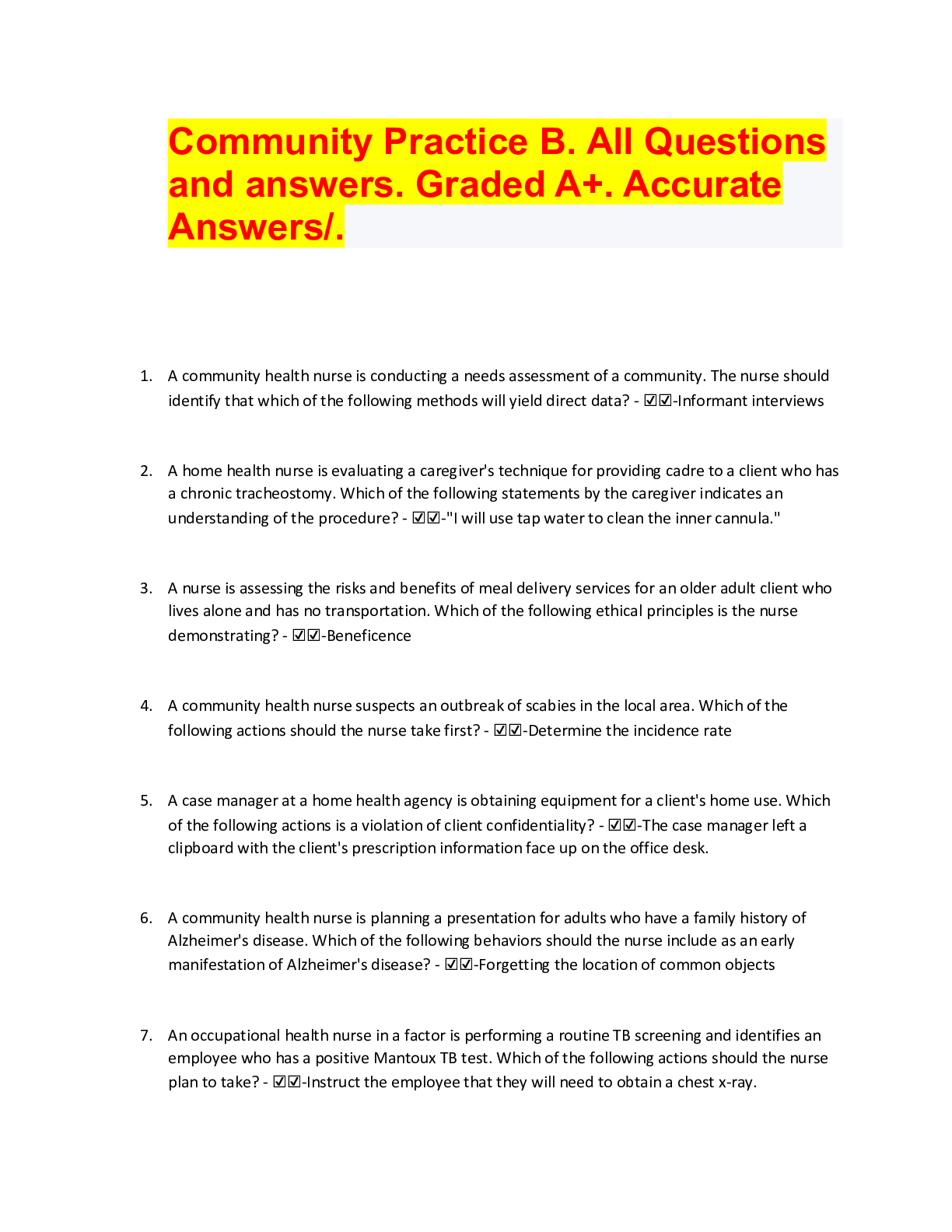*NURSING > QUESTIONS & ANSWERS > NCSBN Practice Questions 61-75. All questions with Rationale Answers. Graded A+. (All)
NCSBN Practice Questions 61-75. All questions with Rationale Answers. Graded A+.
Document Content and Description Below
NCSBN Practice Questions 61-75. All questions with Rationale Answers. Graded A+. The nurse is coordinating care for a postpartum client and her newborn with the unlicensed assistive personnel (UAP... ). The mother is human immunodeficiency virus (HIV) positive. The nurse would recognize the need to educate the UAP, who is observed doing which of the following actions? A. Assist the mother who is attempting to breastfeed her baby B. Place the infant on his or her back in the bassinet C. Wear gloves while changing the newborn's soiled diaper D. Assist the mother to walk to the bathroom - Ans-A In the United States, it is current practice to counsel a mother who is HIV positive, or has AIDS, against breast feeding; breast feeding can transmit the virus through the breast milk to the infant. It is correct to place an infant on his or her back to prevent sudden infant death syndrome. Standard precautions should be followed when caring for any client; health care providers should wear gloves when they anticipate contact with body secretions (changing a soiled diaper). The nurse is teaching a client about precautions while taking warfarin. The nurse should instruct the client to avoid foods with excessive amounts of which nutrient? A. Calcium B. Vitamin E C. Iron D. Vitamin K - Ans-D Vitamin K is an essential vitamin required for blood clotting. Eating foods with excessive amounts of Vitamin K may alter anticoagulant effects. Foods highest in vitamin K include (dried and fresh) herbs, dark leafy greens, scallions, brussel sprouts, broccoli, chili powder, prunes, asparagus and cabbage. A newly admitted client reports gaining 5 pounds (2.27 kg) the past week even though he has hasn't been very hungry. The nurse observes swelling of the feet and ankles. What is the most likely explanation for the weight gain?A. Hyperthyroidism B. Malnutrition C. Congestive heart failure D. Acromegaly - Ans-C The unexplained rapid weight gain is probably due to fluid retention. Clients who gain as little as two pounds (0.9 kg) in a week may require hospitalization due to worsening heart failure. The lack of appetite (or a feeling of being full) and edema are also signs of worsening heart failure. Hypothyroidism, and not hyperthyroidism, can lead to low body temperature, which causes fluid retention or bloating. Low protein levels in the blood caused by malnutrition can cause edema. However, there's not enough information given in the question to know if this client is malnourished or not. Acromegaly is characterized by overgrowth of body tissues, not edema, and is caused by excessive secretion of growth hormone. A nurse is caring for a client with acute renal failure who has a subclavian vascular access port for hemodialysis. Which of these findings necessitates immediate action by the nurse? A. Elevated temperature B. Dry, hacking cough C. Chronic fatigue D. Pruritic rash - Ans-A An elevated temperature in this client would indicate a possible central line infection. This finding should be reported to the provider who should order wound and blood cultures. If a line infection is suspected, the line will need to be removed, necessitating alternate line placement for hemodialysis. Interventions to prevention line infection through maintenance of line sterility and stabilization of the site are a priority in any client with a central line. The other findings should be reported to the health care provider but a febrile reaction is the priority. The parent of a 2 year-old reports the child has experienced mild diarrhea for the past two days. Which statement by the nurse provides the best nutritional information for the child? A. Clear liquids and gelatin for 24 hours B. NPO for 24 hours, then rehydrate with milk and water C. Continue with the regular diet and include oral rehydration fluidsD. Offer bananas, apples, rice and toast as tolerated - Ans-C Current recommendations for mild to moderate diarrhea are to maintain a normal diet with fluids to rehydrate. If the diarrhea was severe then the BRAT (for bananas, apples, rice and toast) diet may be appropriate. An important goal in the development of a therapeutic inpatient milieu is which of these items? A. Provide a testing ground for new patterns of behavior while clients take responsibility for their own actions B. Discourage expressions of anger because such feelings can be disruptive to other clients C. Form a group forum in which clients decide on unit rules, regulations and policies D. Offer a businesslike atmosphere where clients can work on individual goals - Ans-A A therapeutic milieu is purposeful and planned to provide safety and a testing ground for new patterns of behavior. The other approaches may be part of other types of therapies. The nurse is evaluating an adult client who is receiving continuous enteral nutrition (EN) through a nasogastric tube. Which findings would indicate that the nurse needs to contact the health care provider? (Select all that apply.) A. New onset adventitious lung sounds B. 200 mL dark yellow urine voided in the last eight hours C. Aspirated gastric fluid has a pH of 4 D. Pale and dry oral mucous membranes E. A weight loss of 2 kg in 24 hours F. Gastric residual volume of 100 mL - Ans-A,B,D,E Pulmonary aspiration of enteral feeding formula is a risk for clients receiving EN. New onset adventitious or abnormal lung sounds on auscultation in a client receiving EN are indicative of fluid in a lung segment, or narrowing or obstruction of an airway. The health care provider should be notified.Throughout continuous EN, and before intermittent enteral feedings, it is imperative that aspirated secretions be tested for pH levels. In addition, routine aspiration precautions should include strict adherence to standard practices, such as residual volume checks, elevating the head of the bed during feedings and verification of tube exit location markings.Correct placement of the tube in the stomach is verified if the pH is lower than 5. If the tube has been inadvertently placed in a lung or the intestines, the aspirate pH is 6 or higher. Owing to the high risk of adverse events, finding a pH above 6 is a reason to stop theprocedure and verify placement through radiologic methods. Aspirate pH may be altered because of medications or feedings (pH value from 4.5-6). If other indicators verify correct placement, waiting and retesting is recommended, rather than radiologic exposure.Delayed gastric emptying is a concern if 250 mL or more remains in a client's stomach (gastric residual volume (GRV)) on two consecutive assessments (one hour apart) or if a single GRV measurement exceeds 500 mL.Due to the nutrientdense, hypertonic composition of enteral feeding formulas, clients on EN are at risk for developing hyperosmolar dehydration. Signs and symptoms of clinical dehydration include: sudden weight loss (overnight), postural hypotension, tachycardia, thready pulse, dry mucous membranes, poor skin turgor, slow vein filling, flat neck veins when supine and dark yellow urine. If the dehydration is severe, the symptoms will include thirst, restlessness, confusion, hypotension, oliguria (urine output below 30 mL/hr) and cold, clammy skin. The client who is experiencing an acute asthmatic episode is admitted to the hospital with intermittent nonproductive coughing. The pulse oximeter reading is 88%. The client states to the nurse, "I feel like this is going to be a bad episode. I wish I would not have gone into that smoky bar last night." Which nursing diagnosis would be the priority for this client? A. Anxiety related to hospitalization B. Altered health maintenance related to preventative behaviors associated with asthma C. Impaired gas exchange related to bronchoconstriction and mucosal edema D. Ineffective airway clearance related to potential thick secretions - Ans-C The low pulse oximetry reading indicates poor gas exchange, with inadequate oxygenation of arterial blood resulting from the bronchoconstriction and mucosal edema of the acute asthma attack. Treatments will include oxygen administration to correct the hypoxia, titrated to maintain a saturation at or above 92-95%, intravenous or oral corticosteroids to reduce the mucosal edema and inhaled bronchodilators such as albuterol via nebulizer or metered dose inhaler with a spacer to treat airway bronchoconstriction. While the other diagnoses may be appropriate for this client, they are not the priority at this time. [Show More]
Last updated: 1 year ago
Preview 1 out of 59 pages
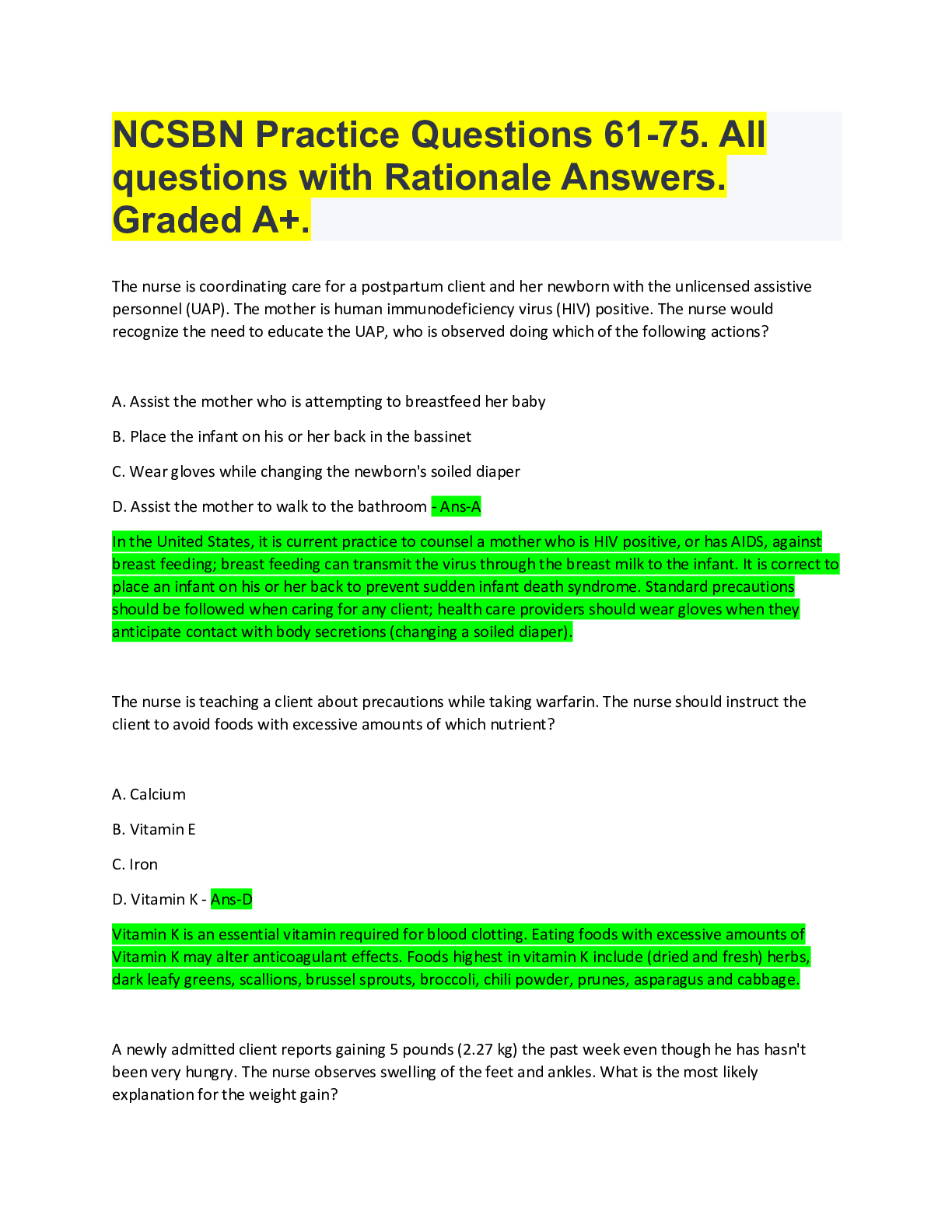
Reviews( 0 )
Document information
Connected school, study & course
About the document
Uploaded On
Jun 28, 2022
Number of pages
59
Written in
Additional information
This document has been written for:
Uploaded
Jun 28, 2022
Downloads
0
Views
96




